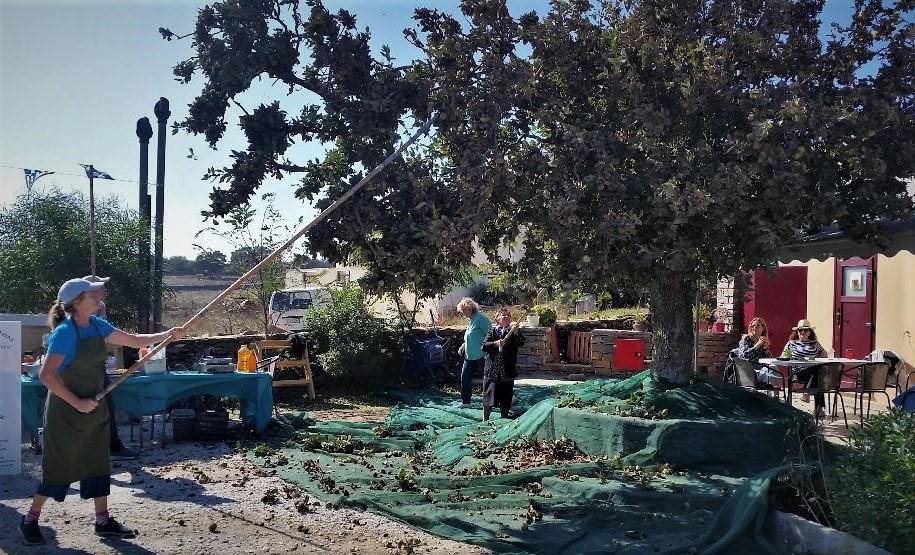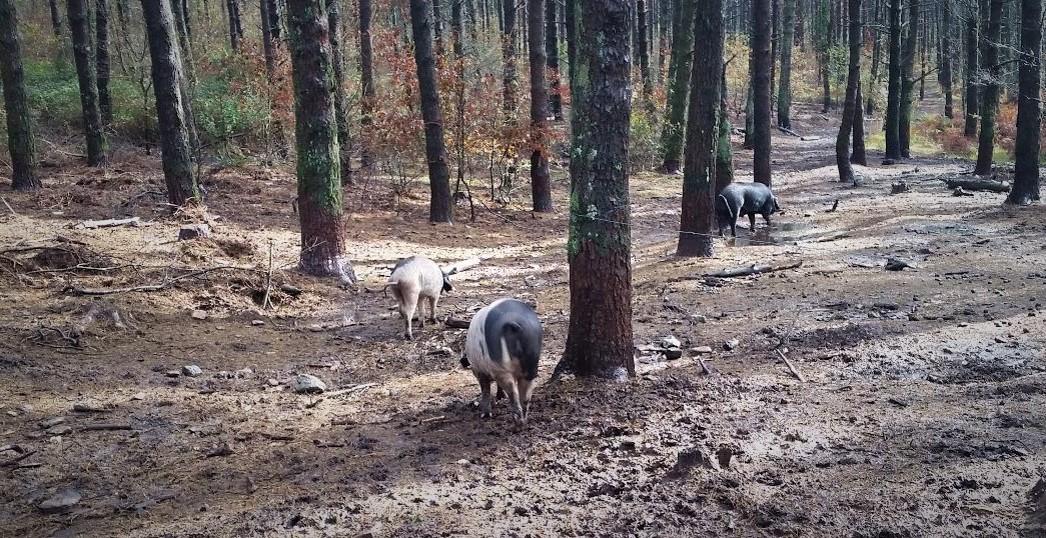Report by Adolfo Rosati
As a researcher at CREA (the Italian Council for Agricultural Research and Economics), I, Adolfo Rosati, was awarded a short-term mobility grant to visit research centers abroad. Of course, I chose to focus on agroforestry!
For three weeks, I visited agroforestry research sites and institutions in Greece, Spain and Portugal.
Here follow some details of my trip.
24th October 2019
The trip began with a journey from Rome to Athens.
25th October
I should have visited the Agricultural University of Athens, under the guidance of professor Anastasia Pantera, but the students had occupied it. So we had an informal meeting with professor Pantera, director of the department of Forestry and Natural Environment Management of the same university, based in Karpenissi.
26th October
We left for the island of Kea where, together with professor Anastasia Pantera and professor Andreas Papadopoulos, we had an informal meeting with the organizer of the acorn Festival (Marcie Mayer) to discuss details about the festival organization.
27th October
We attended the festival during which professor Pantera gave a talk about the ecology of the Valonia oak (“Quercus ithaburensis subs. macrolepis”) and its importance in Kea and more generally in Greece.

From right to left: Prof. Pantera, Adolfo Rosati, Marcie Mayer, organizer of the acorn festival, and a volunteer. Photo by: Adolfo Rosati
28th October
We moved to Karpenissi, home of the department Forestry and Natural Environment Management , Agricultural University of Athens, which I visited the next day, meeting with various researchers and professors and visiting the laboratories.
30th October
We visited the experimental fields with agroforestry trials. Later in the day, I gave a seminar on agroforestry, showing the results of my research on agroforestry in the olive grove. About a hundred students participated, in addition to various professors.

31st October
Flying from Athens to Lugo, in Spain.
1st November
I met Professor Mosquera-Losada and Dr. Jose Javier Santiago Freijanes of the University of Santiago de Compostela, Lugo headquarters, with whom we visited an experimental field with Pinus radiata and Pseudotsuga menziesii and other forest species in combination with herbaceous fodder in various agroforestry combinations.
2nd November
We visited several sites with Eucalyptus and Pinus of different species.
3rd November
We visited agroforestry trials in fruit-bearing chestnut (Castanea sativa) woods. Trees are grafted every 15-20 years on young sprouts of pollarded plants at 2-4 m from the ground. This allows to develop a big trunk for possible sale as high-value wood and at the same time renewing the vegetation for a better fruit production.
4rd November
Visit to a large agroforestry company, Bosques Naturales, with 400 hectares of noble wood species, particularly cherry (Prunus avium) and walnut (Juglans hybrids). Initially the company carried out chemical weeding, spending about 21 thousand euros/year only in the pesticide purchasing. Then they began experimenting with 24 sheep in a project lead by the University of Santiago de Compostela. Given the success of the experimentation, sheep breeding was expanded up to the current 450 heads of today, which control the grass on the entire farm, without any chemical treatments. The presence of sheepdogs is essential, even though the property is fenced.
5th November
I went with the technician of the department, Pablo, to visit some agroforestry trials with wheat (“Triticum aestivum”), rye (“Secale cereale") and maize (“Zea mayz”) cultivated in rows of chestnut trees, in different experimental plots. The chestnut trees were still relatively small and therefore the shade was minimal. In any case, Pablo said that, of the many varieties tested, the most suitable is an early variety of rye, as rye suffocates weeds better and its precocity allows it to better escape the harmful effects of shade.
Then we visited a company of 700 hectares of artificial forest, mainly of Pinus sylvestris which is weeded by pigs of the Celtic breed, Celtic horses and goats. Animals rotate, grazing the undergrowth to prevent fires. The pigs work the soil and clean it from brambles (Rubus) and shrubs of various species. The following year there is an abundant growth of grass that is grazed by horses. The goats, recently introduced, help control brambles and shrubs.
6th November
I visited the university and met with Dr. Mercedes Rois, Professor Antonio Rigueiro Rodriguez and Dr. Belen Diaz, who showed me the laboratory where she prepares apple cider and then characterizes it chemically. Professor Julian Garcia Berrios showed me the activities of micro-vinification of grapes.


7th November
I traveled from Lugo to Santiago airport by bus, then took the plane to Lisbon with a change in Barcelona, arriving in Lisbon in the afternoon. From the airport I went to Lisbon by metro.
8Th November
I met with Professor Joana Amaral Paulo who took me to the University of Lisbon where I met Professor José Paulo Melo Abreu, Professor Cristina Oliveira and Professor Teresa Afonso do Paço. The first one gave me a brief presentation of the research activities of his group and then a small seminar followed with an exchange of research ideas. Professor Cristina Oliveira then accompanied me to see the super-high-density and the traditional olive groves on the University campus. We agreed that I would send her some of my publications on the subject (which I did upon my return to Italy). Professor Teresa Afonso do Paço instead explained her research activities on irrigation and green roofs.
At 2.30 pm I then held a seminar entitled "Light distribution under the trees: modeling transmitted light overestimates understory crop photosynthesis". The seminar was followed by a discussion with the present colleagues.
11st November
I went with Professor Amaral Paulo to visit some experimental cork oak fields and visited a company that produces aromatic and medicinal herbs in the area south west of Lisbon. On Tuesday 12th we returned to the university and visited the laboratory for oil analysis (Laboratórios de Estudos Técnicos, Instituto Superior de Agronomia), in particular olive oils. The laboratory performs thousands of analyzes monthly. In the afternoon I started working on this report.


12nd November
Return to Italy.
The internship allowed me to see the experimental trials initiated by partners of the AGFORWARD project (Agroforestry that will advance rural development, FP7) of which I was also a partner with my institution (CREA). I had not been able to visit these sites during the project itself.
The trip allowed me to gain further knowledge in the field of agroforestry, but also in the other areas of competence of the colleagues and the centers visited. The internship also allowed me to meet many colleagues, to whom I described my activity at CREA and from whom I learned about their research activity.
This allowed me to establish personal and professional relationships and to lay the foundations for possible future scientific collaborations.
Furthermore, professor Pantera asked me to submit a scientific article (review) on the topic "agroforestry and organic farming" for a special issue of the Agroforestry systems journal, for which she is acting as "guest editor".
I have already submitted the article.











